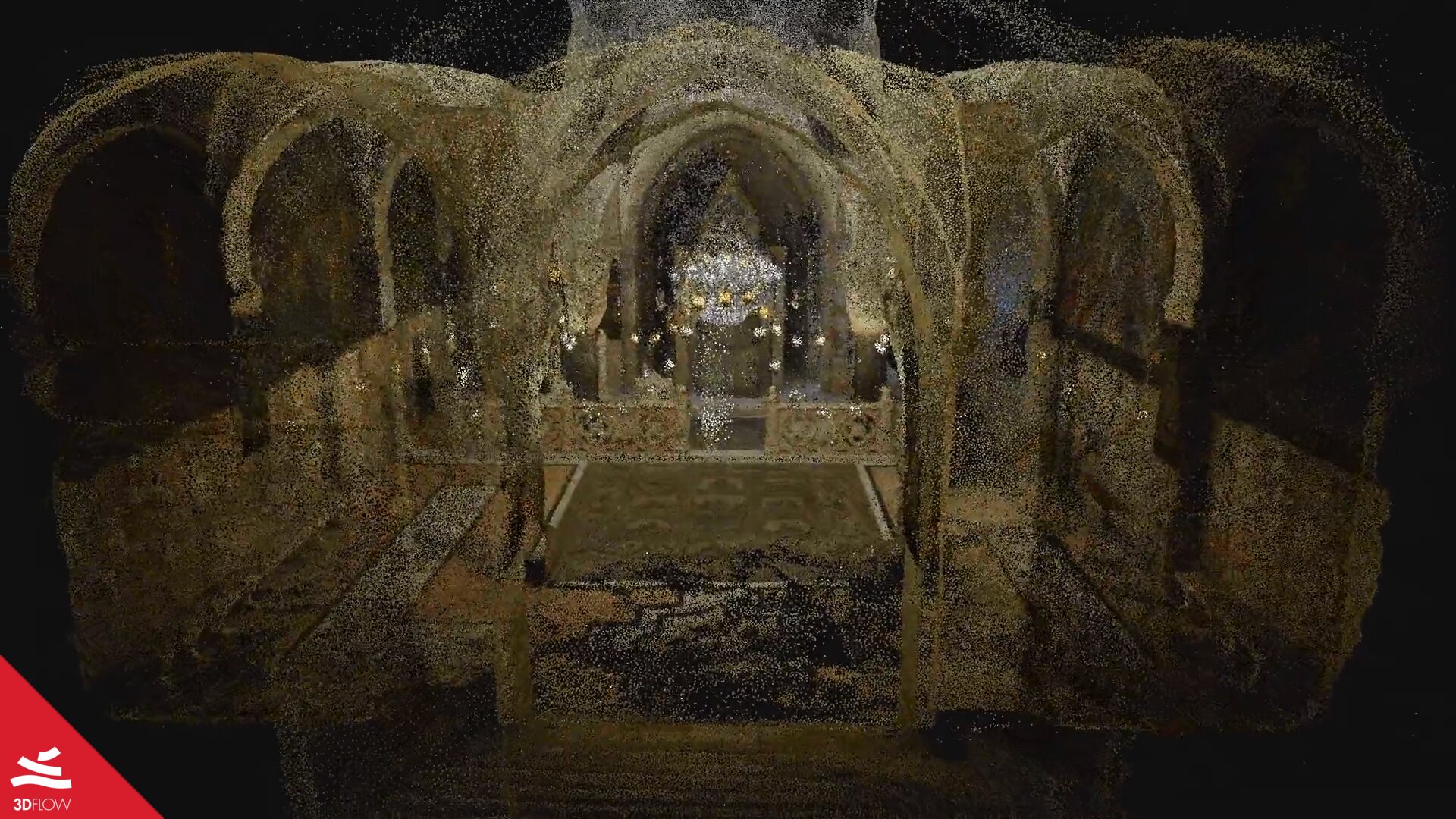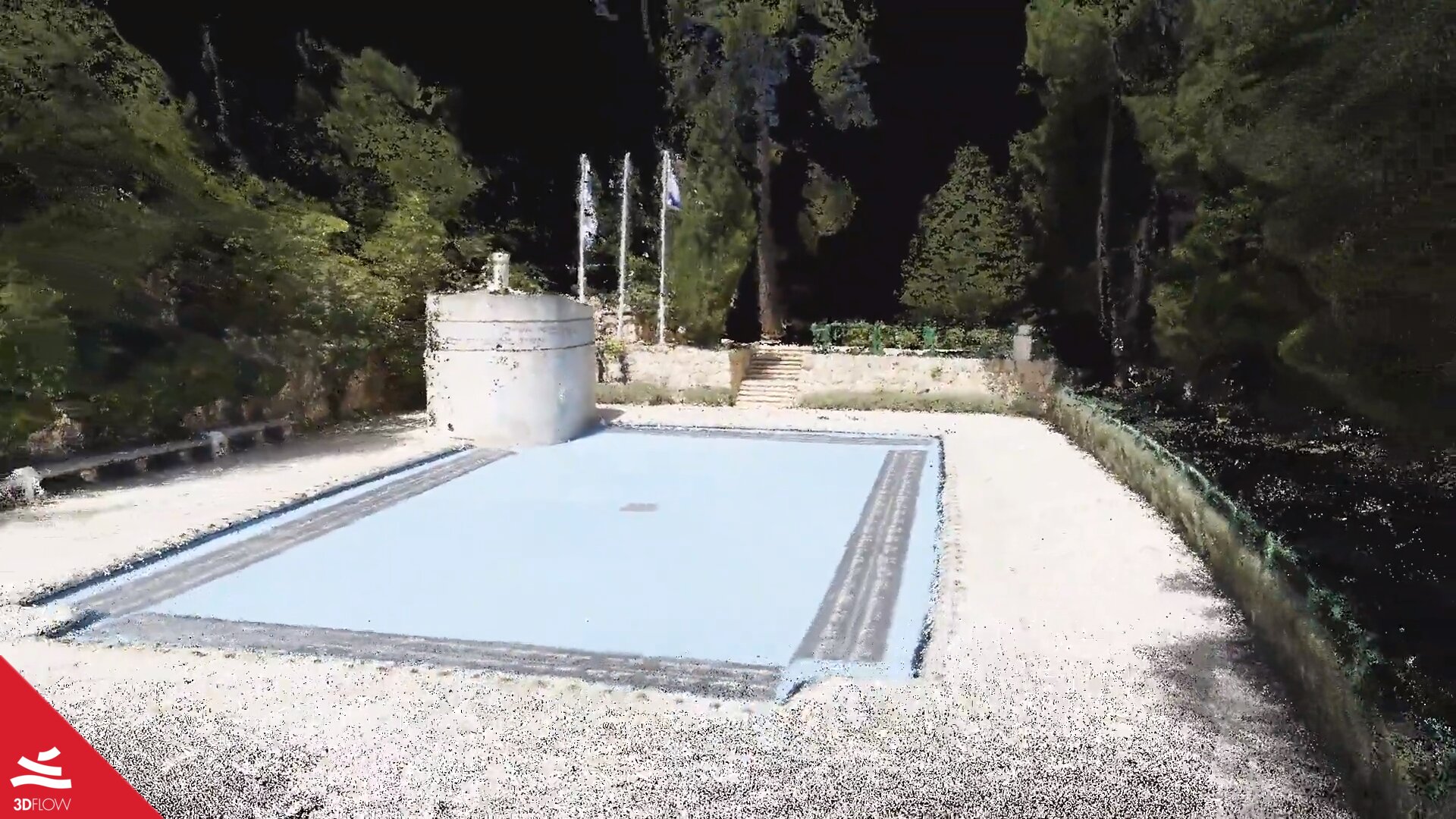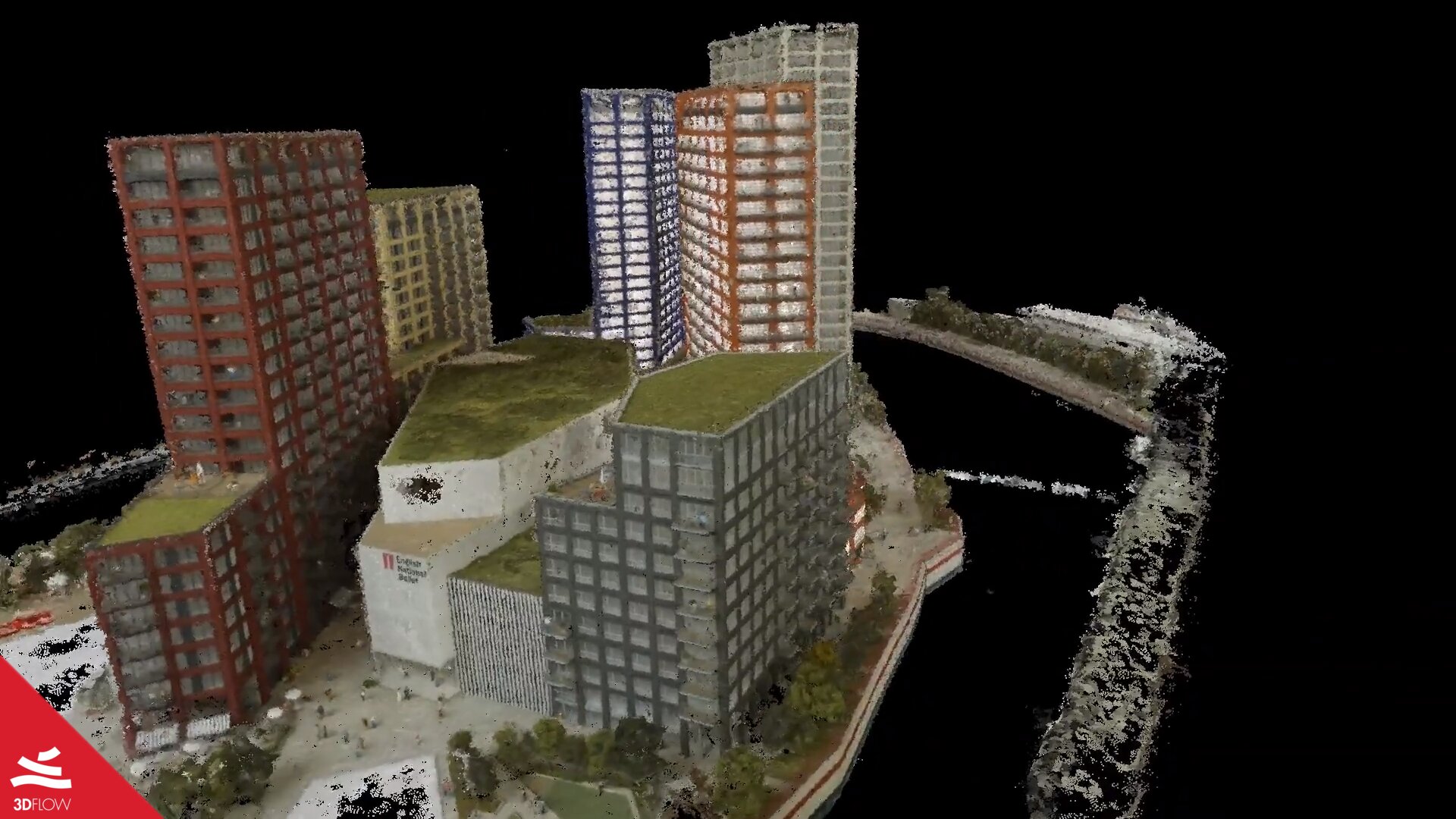The New Jerusalem
Point Cloud, Cultural Heritage
All the data have been kindly provided by Israeli artist Doron Altaratz, a Ph.D. candidate in communications and media studies at the Hebrew University and a Senior Lecturer at the Hadassah Academic College and Bezalel academy of Art and Design. Doron’s research currently concerns the social interactions of users with media and technology.
The project, in collaboration with electronic musician Ariel Karsh, was part of an international residency program at the Arebyte Gallery of London, with Rebecca Edwards as curator.

Click here for more information about Doron’s work.
The Project and its goals
In 2018, Doron aimed to connect two different realities in a historical, political and cultural way: the city of Jerusalem and London City Island, home of the Arebyte Gallery. The outcome of his concept was a point cloud video made from photogrammetry, inserted within a large-scale art project that also involved video projections, 360VR interactive videos presented on an Oculus Go headset as well as a full-color 3D printed object obtained from photogrammetric information from the chapel of Saint Helen of Jerusalem.
In particular, the video was an immersive visual tour of three different sites, chosen to highlight their architectural and conceptual similarities: the already mentioned chapel of Saint Helen, the SS Erinpura memorial at Mount-Herzel in Jerusalem, and a room-scale architectural model of the residency buildings of London City Island.

Point cloud of the chapel of Saint Helen in Jerusalem.
© Doron Altaratz

Point cloud of the SS Erinpura memorial at Mount-Herzel in Jerusalem.
© Doron Altaratz

Point cloud of London City Island Model.
© Doron Altaratz
The intention behind such a project leaned on in the importance of documentation, truth, and accuracy, as well as Doron’s will to “reverse history” through a “reversed pilgrimage” as he called it. To do so, he virtually brought and showed all the crosses hung on the walls of the chapel of Saint Helen, a tangible sign of the passage of pilgrims who traveled from Europe to Jerusalem during crusades.
Survey equipment and data acquired
For the survey of the three sites, a Sony Alpha a6000 mirrorless camera was used and, during the acquisition phase, Doron shooted in Manual mode setting different parameters accordingly to the amount of light of the different scenarios.
The indoor sites were the chapel and the London City Island. Due to the very poor light conditions, the settings were the following:
– Shutter speed set to low values, like 1/60
– Middle aperture (5.6-8)
– High ISO, usually up to 3200.
The outdoor site was the Mount Herzel memorial. In this case, there was so much light affecting the camera parameters:
– Shutter speed set to fast values, around 1/250
– Closed aperture for extended depth of field (around f22)
– ISO 100.
About 1200 images in JPG format were collected for each scenario, although not the whole dataset was used for the successive Structure from Motion phase in 3DF Zephyr Aerial.
Computer specs and data processing
“I found Zephyr highly user-friendly and simple to use, yet the software gives the user the ability to control numerous aspects of the process. To my opinion, the UX people of 3DFlow did an excellent job with the interface.” Doron says, speaking of his personal experience with the software. “Another important feature that I appreciated was Zephyr’s built-in animation tool. The fly-through scenes were created inside the app, which saved me time and a learning curve of using other software for animation.”
Image editing and data processing ran on a 15-inch MacBook Pro (Windows 10 on Boot Camp) with the following specifications:
– Processor Intel Core i7 2.9 GHz
– RAM 16 GB
– Radeon Pro 560 Graphic Card (4 GB)
The reconstruction process took approximately 3 hours in order to extract each dense point cloud: the chapel of Saint Helen had about 15 million points, while the Mount Herzel memorial and the London City Island point clouds were respectively of about 10 million and 5 million points. The mesh was not needed for the project and thus not generated. The rendering time of the animation of the clips, created entirely within 3DF Zephyr, was around 2 hours each.
Watch the complete video here below:
The New Jerusalem from Doron Altaratz on Vimeo.


